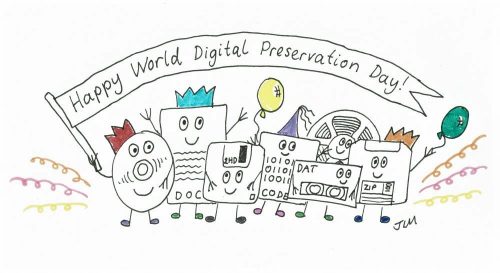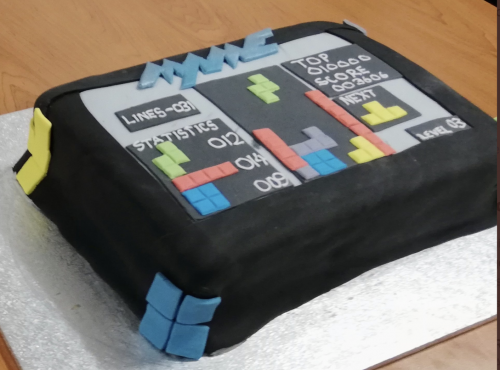This article is more than 5 years old.
November 7th is World Digital Preservation Day, an annual event held on the first Thursday of November. WDPD highlights the challenges and opportunities posed by the ever-increasing quantity of digital media. This year’s theme is “At-Risk Digital Materials” and you can follow the cherished annual tradition (since, well, 2017) on Twitter (#WDPD19) and lots of other social media sites. (For one highlight, check out the “Smells Like Digital Preservation” a la Nirvana video – you won’t be disappointed.)

(Cartoon courtesy of Digital Preservation Coalition)
One of the ongoing digital preservation challenges going into 2020 is how best to support local history organizations and community-led archives, which typically have limited resources to put toward preserving their digital media. There’s a growing community of researchers, practitioners, and collaborators interested in the notion of community-driven or participatory digital archives. In a participatory approach, community organizations generate digital records that, in most cases, will never end up in a formal archival institution. With adequate guidance and support around digital archives infrastructure and workflows, small-scale records producers can maintain control over their records and media.
Community-led projects such as those launched by the Marian Cheek Jackson Center for Saving and Making History, whose mission is to “honor, renew, and build community in the historic Northside and Pine Knolls neighborhoods of Chapel Hill, NC,” have resulted in tools and infrastructure (in this case, recording equipment and documentary production training) for community members to document their neighborhood histories and preserve the resulting digital stories. The Center recently developed a unique program called “Soundwalk of Northside,” in which a documentary filmmaker-in-residence, Alex Stephens, interviewed over a dozen residents and helped produce a walking audio tour of the Northside neighborhood that visitors can hear on CD or online. The goal of the project was not only to encourage neighbors and guests to get to know the landscape and history of the neighborhood but to help make these stories visible and accessible to everyone. To ensure that these valuable digital histories were preserved in alignment with good practice, the Center partnered with the Southern Oral History Program to develop in-house infrastructure and archival workflows for managing the collection of recordings.
This collaboration between a public institution and a small community history group is just one example of how digital preservation outreach can provide useful support to public history projects by sharing resources and ideas, all the while ensuring that the organization itself continues to drive its documentation projects and remains grounded in its community-building mission. For community history organizations like the Jackson Center, the challenge of digital preservation benefits from participatory and community-driven strategies that invite everyone to document, create, and preserve their own digital stories.
#WDPD19 has inspired more than a few creative approaches to advocacy. From videos to blogs to binary 1/0 cookies (nice!), organizations from around the world are highlighting the need to maintain our digital cultural heritage. A common theme is that while we cannot save everything, the digital media we value most are worth attending to.
Of all the #WDPD19 highlights, this sugary homage to game preservation & emulation really takes the cake (yup, that’s a cake, complete with buttercream frosting – courtesy @ktaines):

Clearly, there are a few good bakers in our midst.

1 Comment on ‘World Digital Preservation Day 2019’
I’m always supportive of themed baking! The empowering of local community projects to archive their works is wonderful. Our local New Winston Museum immediately comes to mind as an organization that would be a great partner for such an initiative.